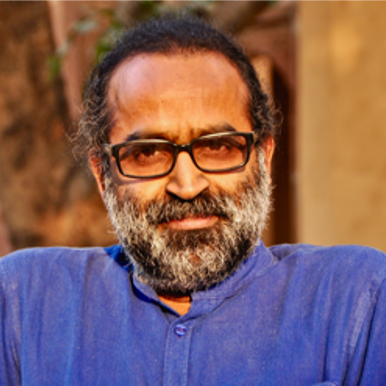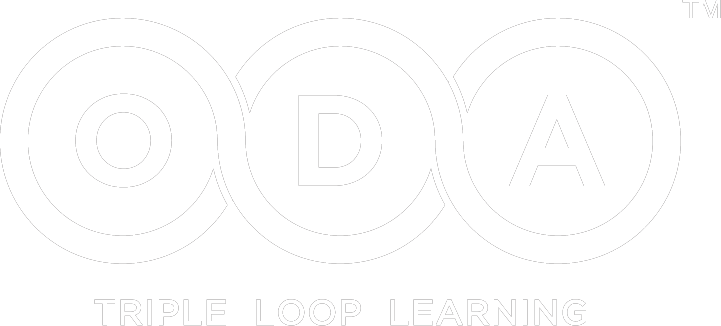Athena Values and Age of Consciousness


Santhosh Babu
I’m in a bit of a dilemma. Should I focus on increasing revenue or building culture? Should I be driving profitability or people development? Should I be articulating the larger purpose of our existence throughout the organization or operational efficiency and cost cutting? If this resonates with you, you’re definitely not alone! Leaders usually find themselves in the middle of challenges that pull them in completely opposite directions and get confused about which path to take.
Some challenges many leaders face today are actually not problems to be solved, but polarities and dilemmas that need to be managed. A polarity is a concern or a challenge that can be managed by focusing on two interdependent, diametrically opposed right answers. A polarity requires ‘both/and’ thinking to be managed effectively. For example, deciding how to best handle organizational downsizing requires solutions that focus on both costs and people (customers and/or employees), despite the fact that these two solutions pull the organization in opposite directions. This requires an integrated approach to challenges and our traditional wisdom talk about the ability to understand the oneness in things that might look seemingly separate initially.
Ardhanarishvara represents the synthesis of masculine and feminine energies of the universe and illustrates how Shakti, the female principle of God, is inseparable from (or the same as, according to some interpretations) Shiva, the male principle of God. The union of these principles is exalted as the root and womb of all creation.
Athena, the Greek goddess, is the symbol of both wisdom and warfare, combining within herself two qualities we tend to find incompatible today but were easily accepted in olden times. Interestingly the Hindu Goddess Lakshmi and Athena are both associated with the owl. Throughout many cultures, the owl signifies intelligence, brilliance, perspective, intuition, quick-wit, independence, wisdom, protection, mystery and power. These values clearly demonstrate an amalgamation of both masculine and feminine traits. “I want Infosys to be a place where people of different genders, nationalities, races and religious beliefs work together in an environment of intense competition but utmost harmony, courtesy and dignity to add more and more value to our customers day after day.”
This statement by N.R. Narayana Murthy illustrates the importance of managing the polarities of competition and harmony. Does this mean that leaders need to integrate both feminine and masculine values to develop integral thinking and to manage polarities?
Ken Wilber, one of the most influential philosophers in the world today says, “In our current post-modern world, we possess an abundance of methodologies and practices belonging to a multitude of fields and knowledge traditions. What is needed is an approach that moves beyond this indiscriminate eclectic-pluralism, to an “Integral Methodological Pluralism”- driving toward a genuine ‘theory of everything’ that helps to enrich and deepen every field through an understanding of exactly how and where each one fits in relation to all the others. Through the Integral approach, we reveal the previously unseen possibilities for a better, more compassionate and more sustainable future for all of us.”
f we look back, we know that human beings have moved from the hunter-gatherer stage to the agrarian era, then into the industrial era and currently are in the information age. In each of these stages the competencies required for us to lead and sustain life are different. For example, in the hunter-gatherer stage it was survival skills and physical strength and in the agrarian era it was land ownership, cultivation skills and animal husbandry. When we moved into the Industrial age,skilled manpower was seen as the strength needed to succeed. And in our current times, the Information age and our intellectual capital are valued as strength. So what is the next stage for us? We are now moving into an age of consciousness now, looking at all the trends.
For many, traditionally the word “conscious” meant being awake and aware of what was going on around you in your immediate environment. Unconscious meant being asleep, knocked out, or unaware of what was going on around you. Now consciousness means much more.
It is more about mindfulness – awareness of one’s existence, thoughts, feelings and environment. And at a deeper level- being awake, alive, accepting of life as it is, connecting with others on deeper levels, being present to the bigger picture, and the greater good for all. While social entrepreneurship is a growing sector today, in future it will dissolve into mainstream business and all businesses would focus on the social aspect far beyond what we now call CSR initiatives.
In the consciousness age, the competitive advantage organizations need to demonstrate is cultural capital rather than intellectual capital. A 56 Inch chest would have helped us only in the hunter gatherer stage. Cultural capital is the value attached to the collective mental programming (values, beliefs and behaviors) of the organization that supports its relationships with its employees, customers and society. Today’s leaders need to build this cultural capital for their organizations to thrive in the next decade.
Many senior executives feel culture is an intangible area; hard to measure and change. More than a decade ago ANZ Bank in Australia embarked on a journey of culture change focusing on core values, employees and customers. They worked out early on that if they really wanted to have superior performance, value for shareholders and maintain service for customers, they would have to engage the hearts and minds of the people inside the organization. “If people are happy and productive, then those things will happen eventually,” said then ANZ CEO, John McFarlane.
More recently, last year Deutsche Bank initiated a culture transformation intervention. I addressed the senior leadership team of the bank on culture transformation and every leader has now taken personal responsibility to drive the new set of values that also focus on sustainable performance by putting long-term success over short-term gain.
The website of the bank says “it is essential for the banking industry to restore a firm bond of trust with the communities we serve. We have set ourselves the goal of taking on a pioneering role in the change that is indispensable in the business sector: Cultural change is therefore an essential part of our Strategy 2015+.” The Management Board and the Group Executive Committee therefore initiated a comprehensive dialogue with employees and senior management. One crucial step is to bring the attitudes and goals of our staff in line with the needs of our clients and the overall economy.
Remember, Culture can eat Strategy for breakfast any day. Are you building a culture that could help your organization excel in the next decade? Are you integrating both masculine and feminine values and managing polarities?
Please click here to download the latest OD PUBLICATION.

